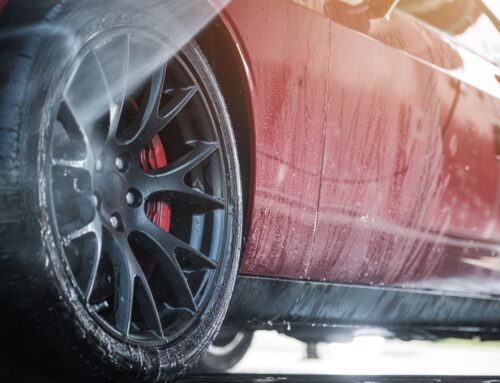
History of Paint Protection Film (PPF)
History of Paint Protection Film (PPF)
Paint Protection Film (PPF) began when the US Department of Defense developed a urethane coating to protect helicopter blades from damage from flying debris. The applications for protecting car paint became a reality when in 1961 it was developed for a Porsche 356. It was made of black vinyl and didn’t have the attractive appearance of modern paint protection film. Thanks to its history, PPF earned the nickname “helicopter tape”. By the 1980s, a new form of urethane coating was developed to protect racecars from damage. Its high price made it inaccessible to everyday drivers at first, but that eventually changed.
Paint protection film is now transparent, and once it developed this attractive appearance and a more accessible price, it became a popular consumer product.How Paint Protection Film (PPF) Works
Paint protection film or PPF is a thermoplastic urethane film. It’s placed over your existing paint job as an extra form of protection. There are several film options on the market today, but one of the most important factors that sets them apart from each other is thickness.
Paint protection film thickness is typically measured with calipers in micrometers. Thickness is dependent on factors such as the manufacturer and the type of adhesive layer, which determines how much protection the film provides, a measure known as “effective thickness”.
Thickness is difficult to measure, but the general principle that installers follow is that the more the film is stretched, the thinner it will be. Pliable films retain their thickness better, and certain patterns need to be stretched more. An improper installation reduces effective thickness, which is one of the reasons why you should always have the film installed by a professional.

Benefits of Paint Protection (PPF)
Benefits of Paint Protection (PPF)
Benefits of paint protection film include aesthetic appeal, protection from damage, rust, wear and tear, and UV rays, and increased resale value. A clean, shiny exterior is one of the main goals of almost any car owner, and paint protection films can help them achieve it. They create a wax-line quality that improves the look of any paint job.
Paint protection film protects against scratches and nicks from everyday road hazards. Its self-healing properties can make them fade away as if they never happened. Paint protection film prevents paint wear and tear on the most vulnerable areas of your vehicle, such as the front end, door thresholds, and the top of the rear bumper.
Films are useful for more than aesthetics and ensuring your paint job looks its best. They also help your car maintain its value. Paint protection film fights against rust that can ruin the appeal of your vehicle and films have hydrophobic qualities which also make your car easier to clean.
Paint protection film also protects against damaging UV rays from the sun. UV has devastating health effects such as cancer, skin or eye damage, and immune system suppression. UV rays can also reach the interior of your vehicle, heating it and causing the material to fade. Damaged or chipped paint also hurts the resale value of your vehicle. If you want your car to fetch the highest price possible when you go to resell it, you need to use a film to protect your cars paint.

Maintaining Your Paint Protection Film (PPF)
Maintaining Your Paint Protection Film (PPF)
If you’ve recently had paint protection film installed on your vehicle, congratulations! You’ve taken an important step in preserving the beauty of your car’s paint job. But how do you care for your new film and keep it looking good? Here are some tips on how to maintain your paint protection film so that it continues to protect your car for years to come.
First and foremost, it’s important to remember that paint protection film is not magic. It will not make your car’s paint completely resistant to damage. However, it will provide a barrier between your paint and the elements, which can help to prevent scratches, chips, and other types of damage.
One of the best ways to care for your paint protection film is to wash your car regularly. This will help to remove any dirt, dust, or other debris build-up that could potentially damage the film.. Of course, it’s important to take care while washing your protected vehicle by following these tips:
- Wash your vehicle up to once a week.
- Use a mild car soap like GYEON Bathe. Avoid using harsh chemicals on the film.
- Using the two-bucket hand wash method is ideal. If you must visit an automatic car wash, only visit touchless car washes.
- Avoid spraying high pressurized water at the edges of the film. This can cause the film to lift.
- DO NOT wax or polish your paint protection film.



